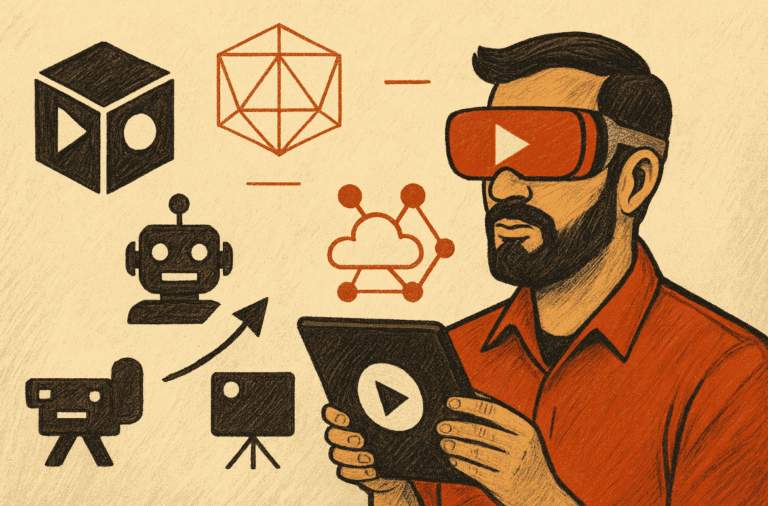See how artificial intelligence, immersive experiences, and new technologies will transform video production in 2026. Data, trends, and practical strategies.

Every now and then, audiovisual media experiences turning points. In the 2000s, the arrival of YouTube decentralized video creation. In 2016, TikTok ushered in the era of ultra-short-form formats. Now, on the cusp of 2026, a new movement is emerging: the integration of artificial intelligence, immersive experiences and automation at all levels of audiovisual production. These are not passing fads. This is a structural transformation that will define how brands, creators, and companies communicate in the coming years.
Recent reports from IAB (Interactive Advertising Bureau) indicate that 40% of video ads should be created with the help of AI by 2026. Platforms such as Netflix and YouTube already tested dynamic, personalized ads in real time. At the same time, the demand for low latency live streaming is growing at a rapid pace, while experiences with augmented reality (AR), virtual reality (VR) and holograms are beginning to leave the laboratory and become commercial solutions. What does this mean in practice? That the concept of "video production" will not be the same in two years.
AI is already present in everyday editing: from noise removal to automatic subtitle generation. But in 2026, the discussion goes far beyond technical efficiency. We're talking about script creation, virtual scenario generation, voice synthesis and even digital actors. The IAB points out that 86% of advertisers plan to use generative AI in their campaignsAnd it's not just about reducing costs: AI enables a scale of personalization that would be unthinkable with traditional methods.
Imagine a clothing brand that launches 50 variations of the same ad, each tailored to the user's consumption style. This isn't a far-fetched hypothesis. It's already a reality in tests conducted by platforms like Goal and Google.
If you want to understand how short videos are already being impacted by AI today, I also recommend the article Why invest in short video in 2025, which connects well with this discussion.
Streaming platforms are moving toward a new logic: ads will no longer be separate blocks, but rather integrated elements within the content. Netflix and YouTube are already experimenting. AI-generated commercials that adapt in real time to the profile of the person watching (TechRadar).
Augmented reality and virtual reality are far from new, but 2026 should mark the first phase of mass adoptionLighter glasses, corporate metaverse platforms, and interactive holograms are already beginning to find real-world applications. For audiovisual, this means expanding the concept of "video" to include three-dimensional and participatory experiences (BoxMedia).
Another rapidly growing field is that of ultra low latency streaming. According to the AV Network, the market is expected to grow 16.6% by 2029. This will allow for near-real-time broadcasts, without the delay that currently limits live interaction.
By 2026, video production will no longer be defined solely by cameras, scripts, and editing. It will be a combination of Generative AI, interactivity, immersion, automation, and purposeThe market isn't waiting: it's already in motion. For those working in audiovisual media, the challenge is clear—adapt quickly while maintaining authenticity as a guide. Because in the end, no matter how much technology advances, what connects people to brands and stories is still (and will continue to be) the ability to tell something that matters.
Request a Quote